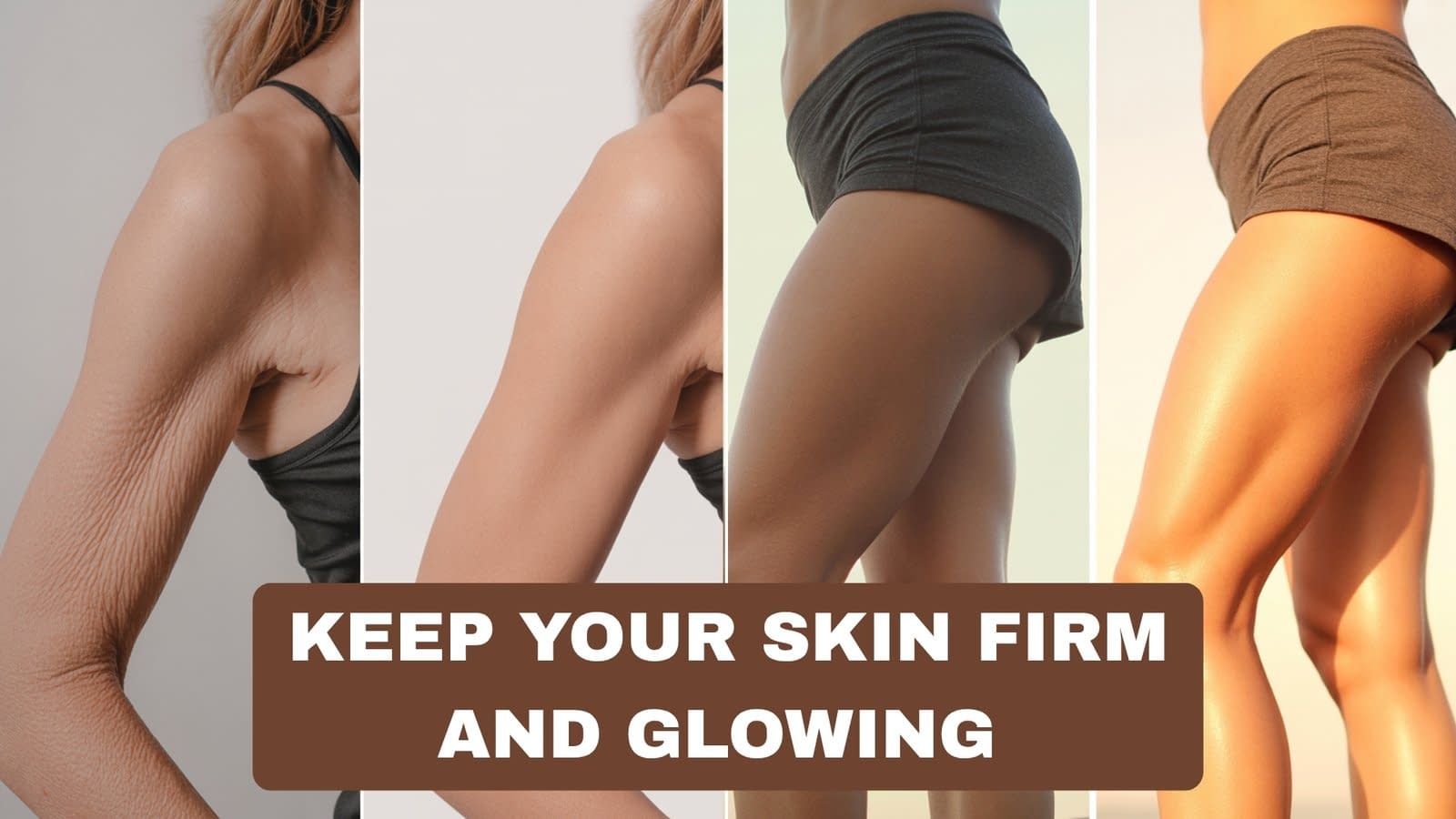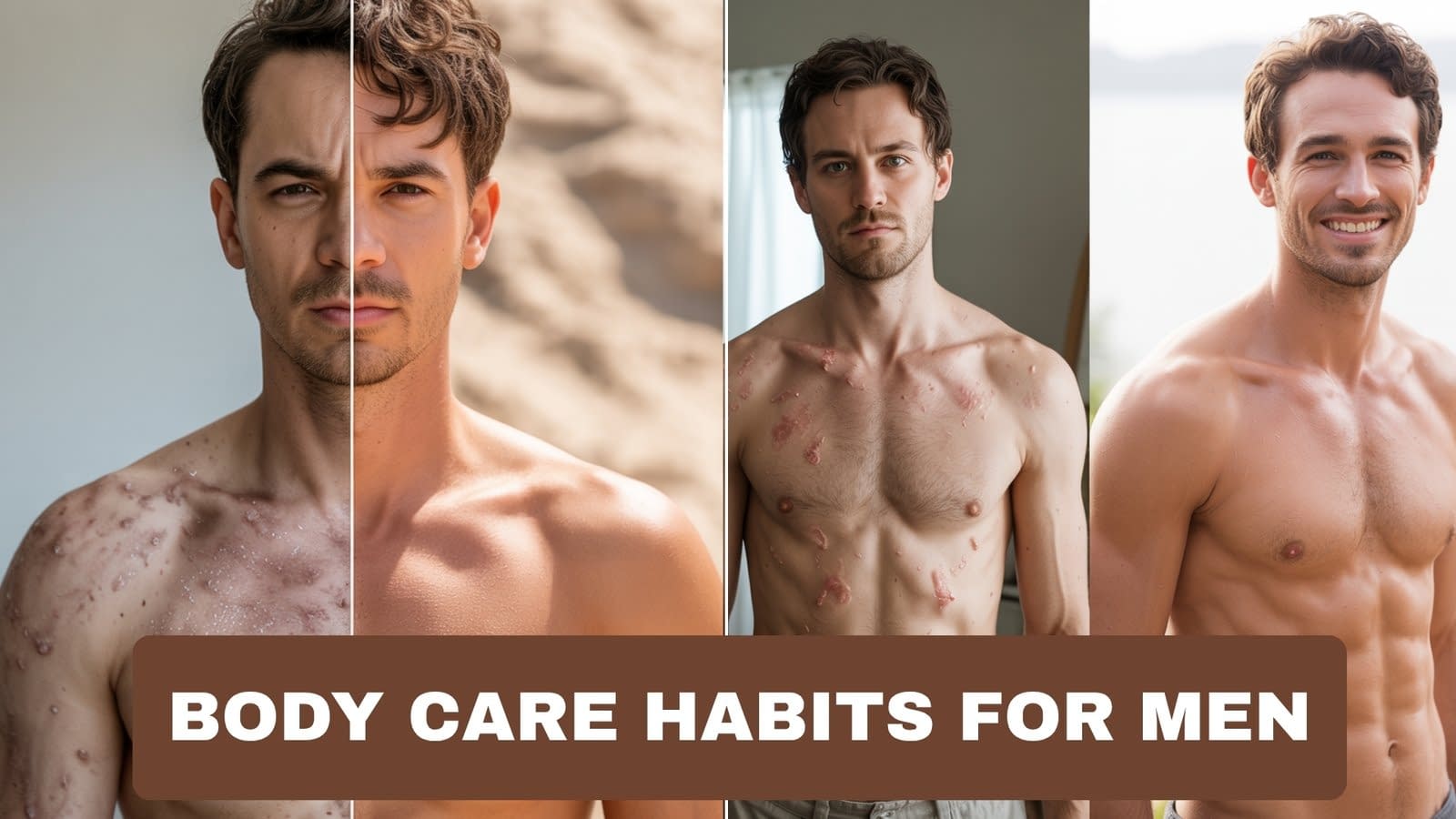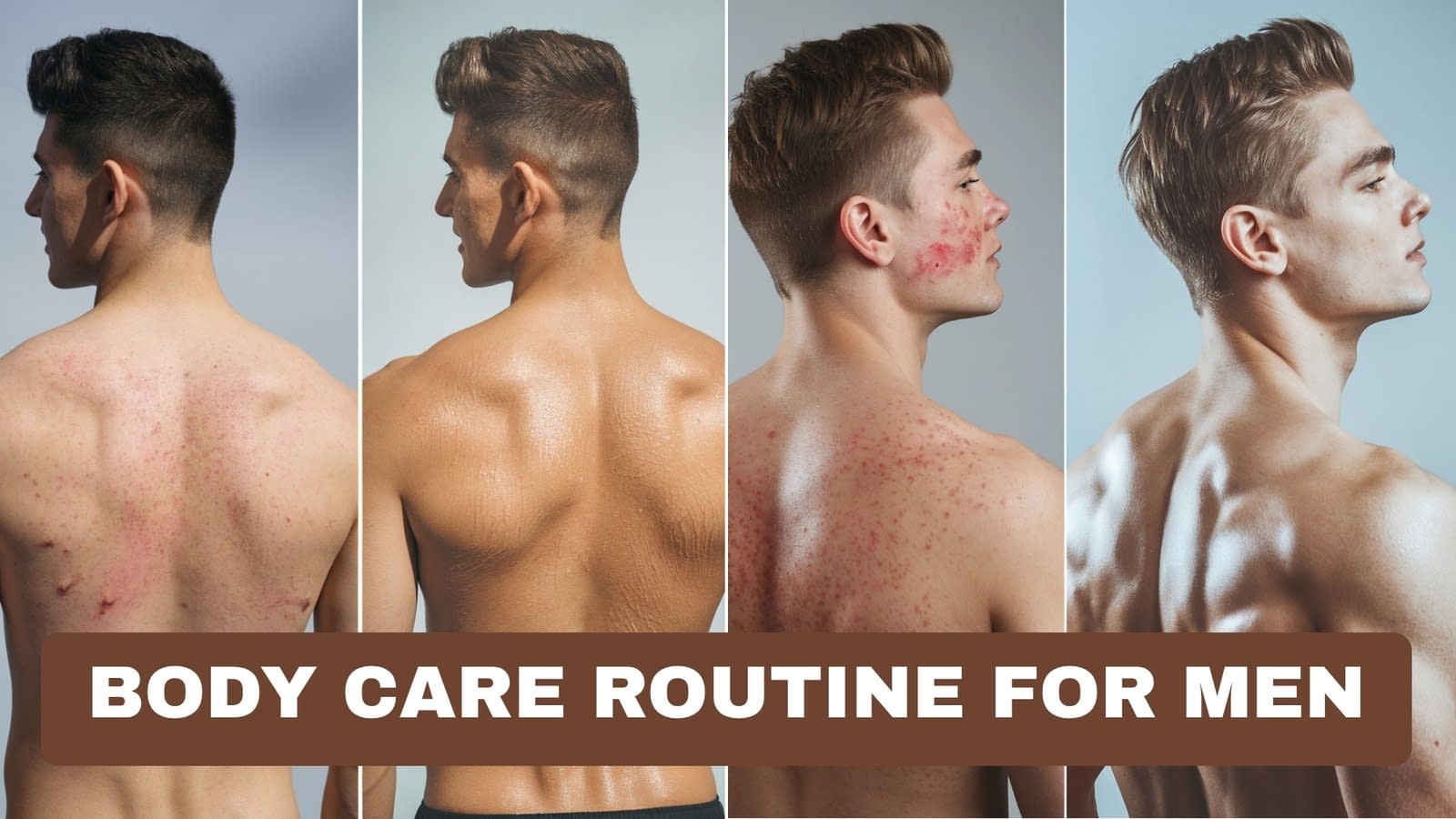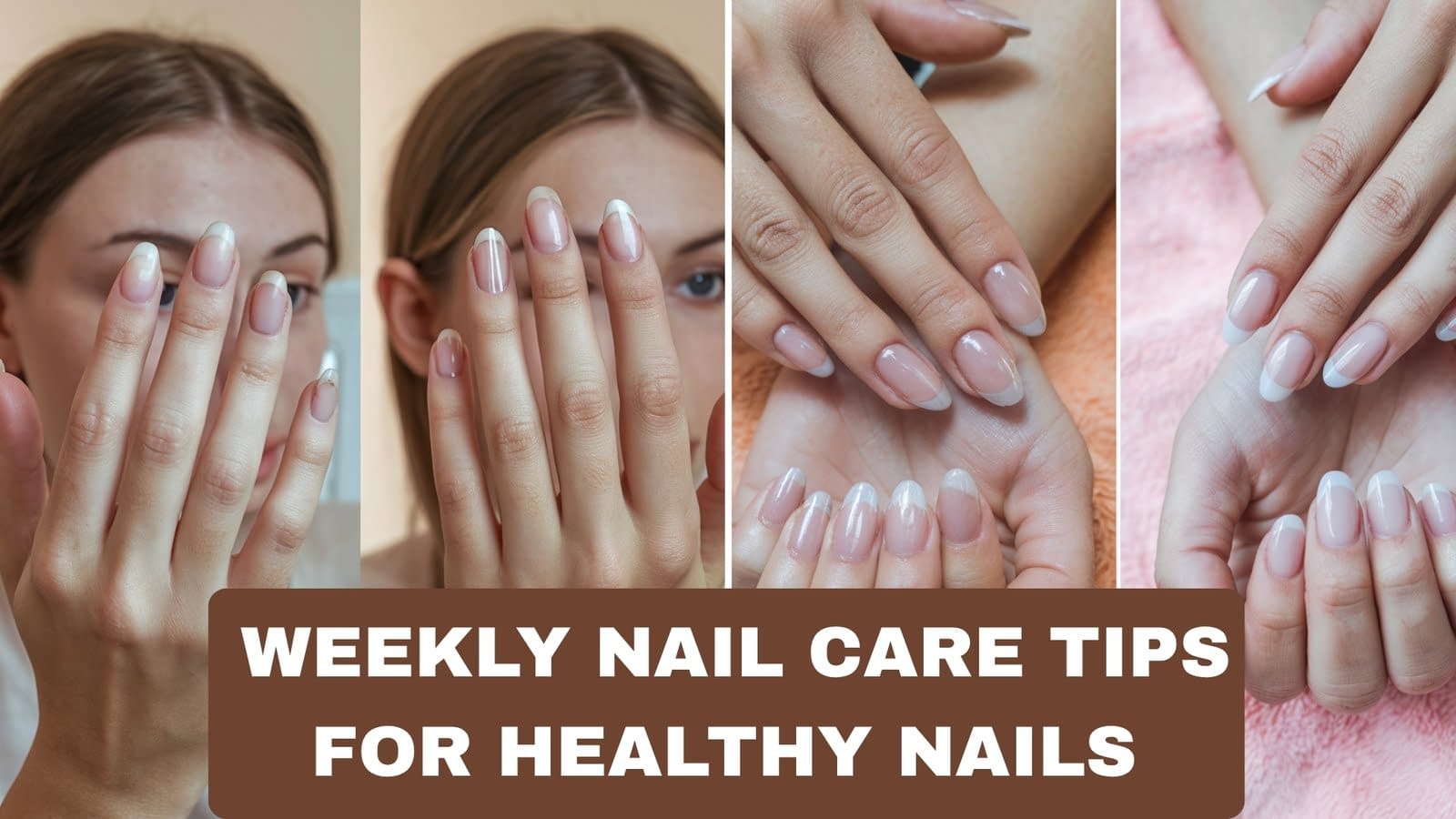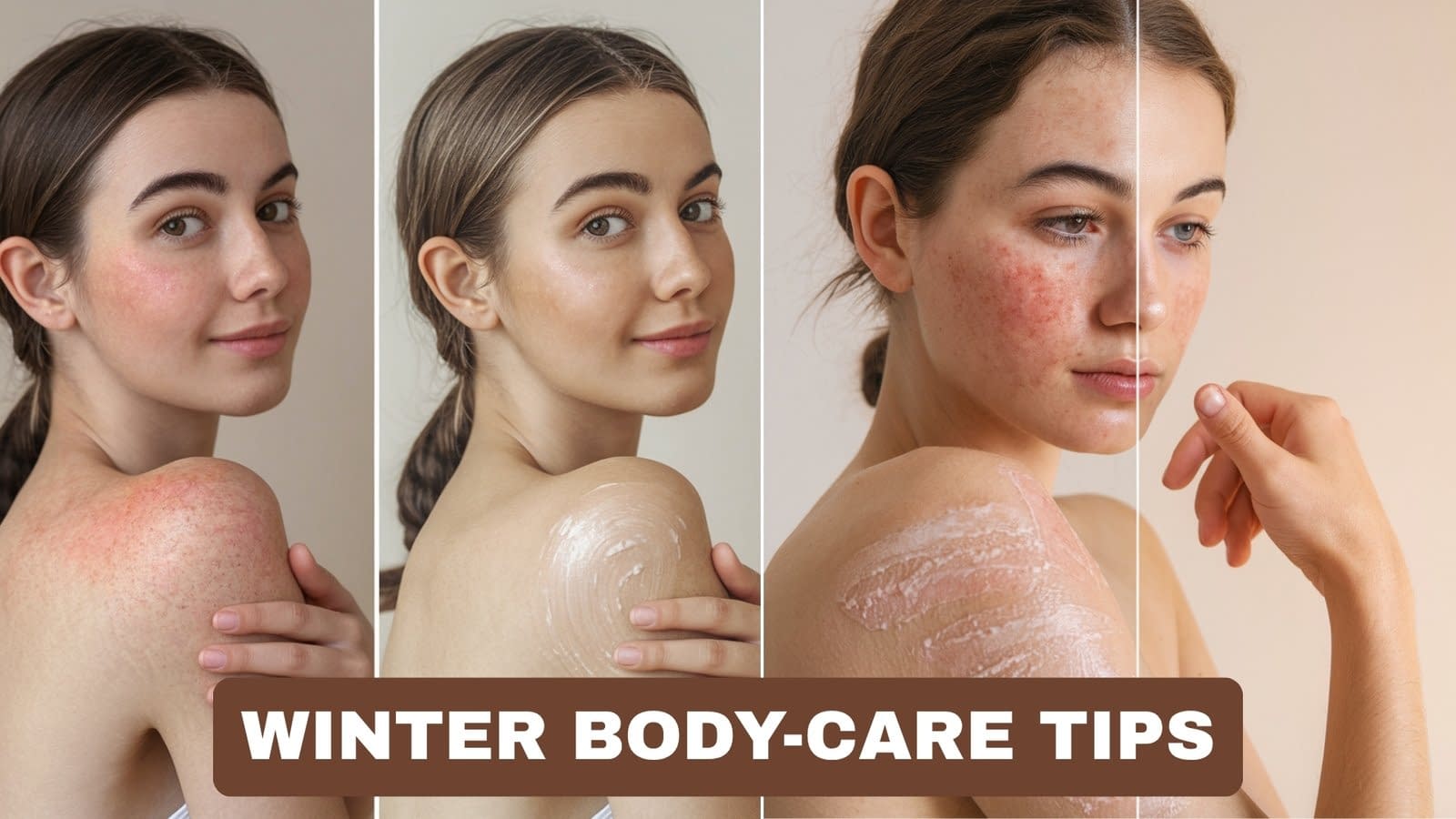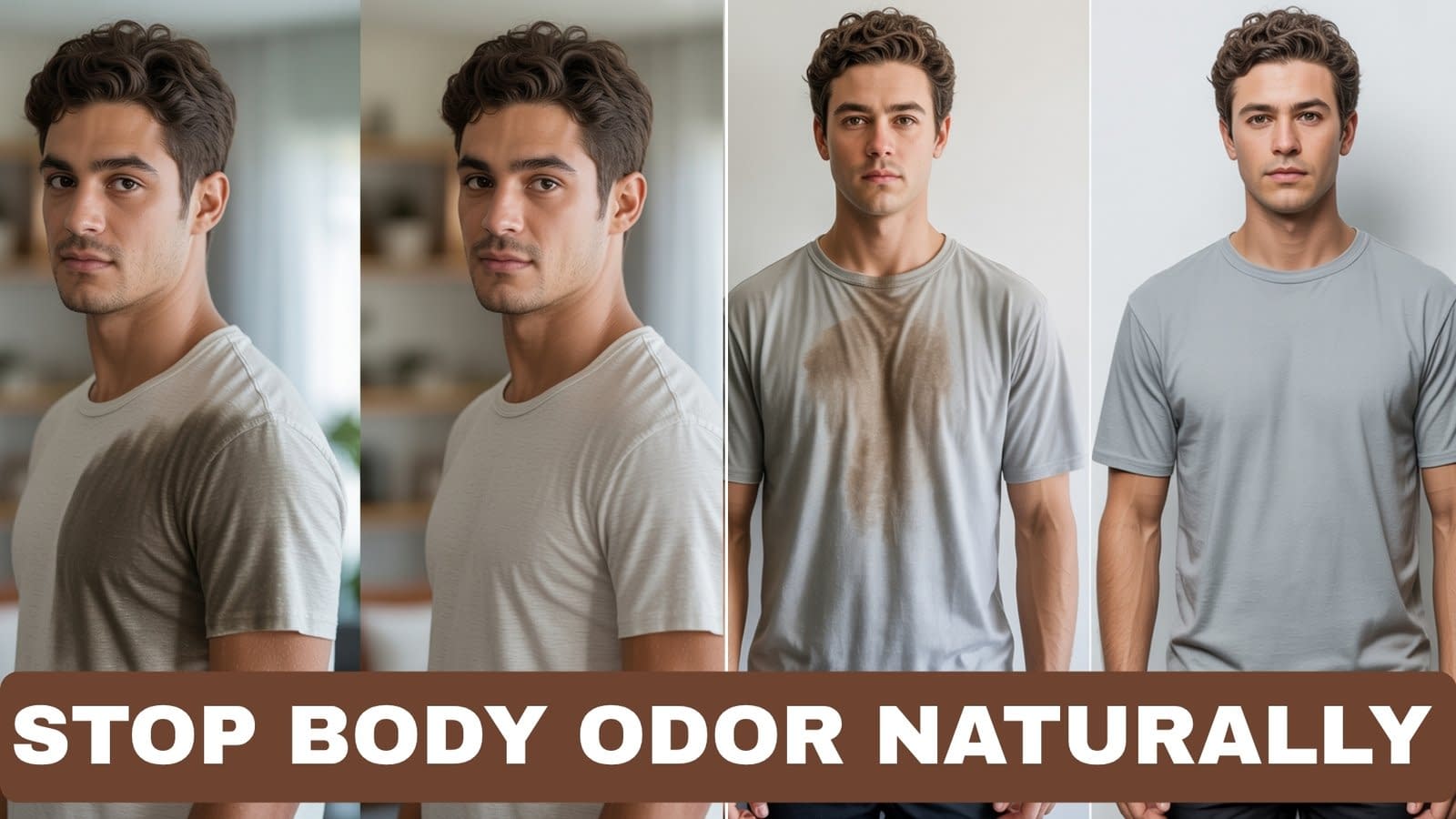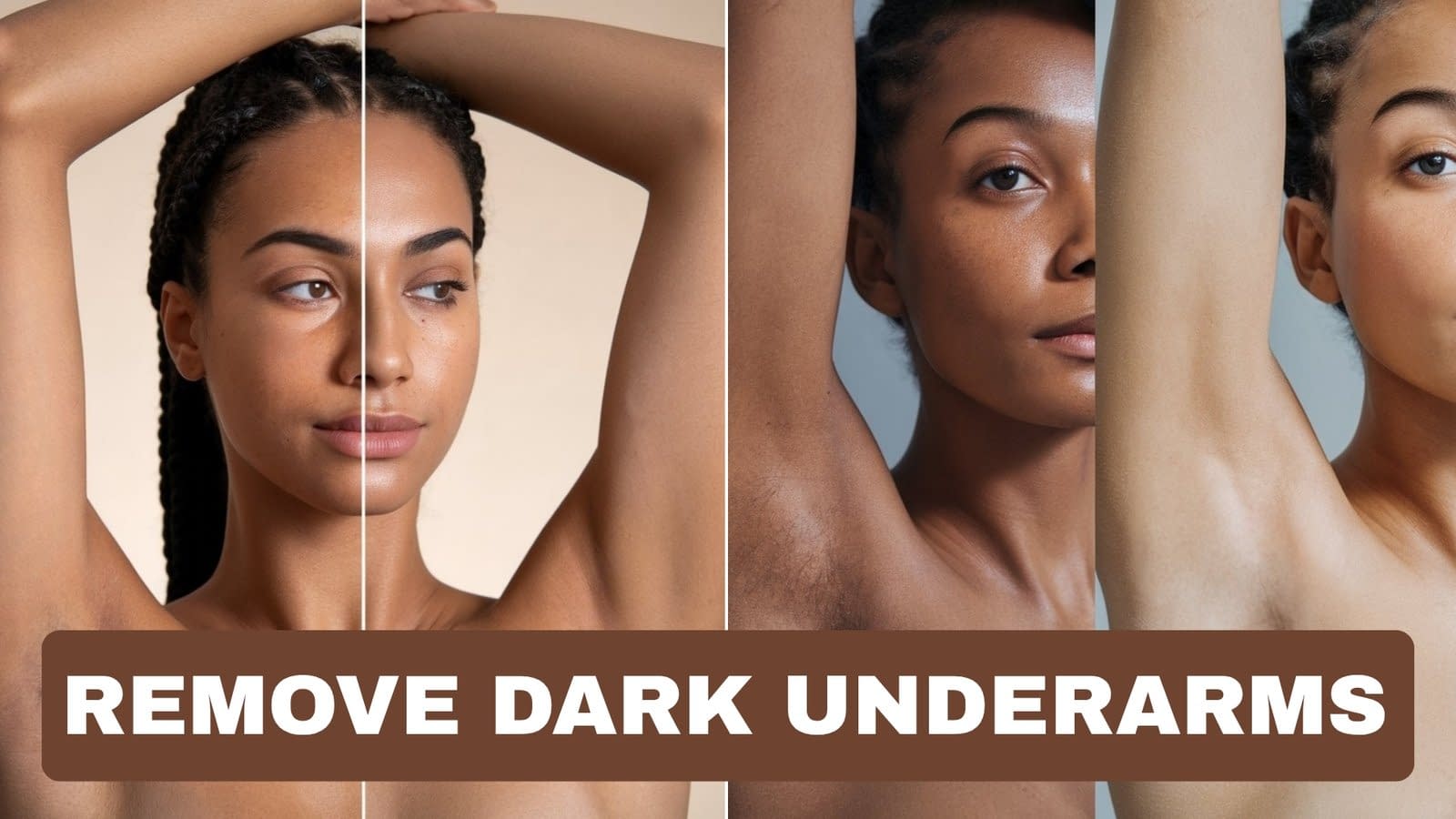Aging is a natural process, but that doesn’t mean you have to accept sagging, dryness, or dull skin as inevitable. Your body’s skin undergoes gradual changes over time—collagen and elastin levels decline, moisture retention decreases, and environmental stressors accumulate. With thoughtful care, targeted ingredients, and mindful habits, you can maintain skin that feels firm, hydrated, and radiant well into your later years. This guide breaks down practical, science-backed strategies to help you keep your skin healthy, youthful, and glowing from head to toe.
Why Firm, Glowing Skin Matters as You Age
As we age, the appearance and texture of our body’s skin change more than we often realize. Fine lines, sagging, and dullness are natural consequences of reduced collagen, elastin, and hydration, combined with the long-term effects of sun exposure and lifestyle factors. Firm, glowing skin isn’t just a cosmetic goal—it reflects overall skin health, hydration, and vitality.
Maintaining a consistent body care routine is essential not only for aesthetics but also for comfort: properly nourished skin is less prone to irritation, dryness, and tearing. This guide will walk you through the key components of an effective anti-aging body care routine, from hydration and sun protection to movement, nutrition, and advanced treatments.
Understanding Aging Skin: Collagen, Elastin, and Moisture Loss
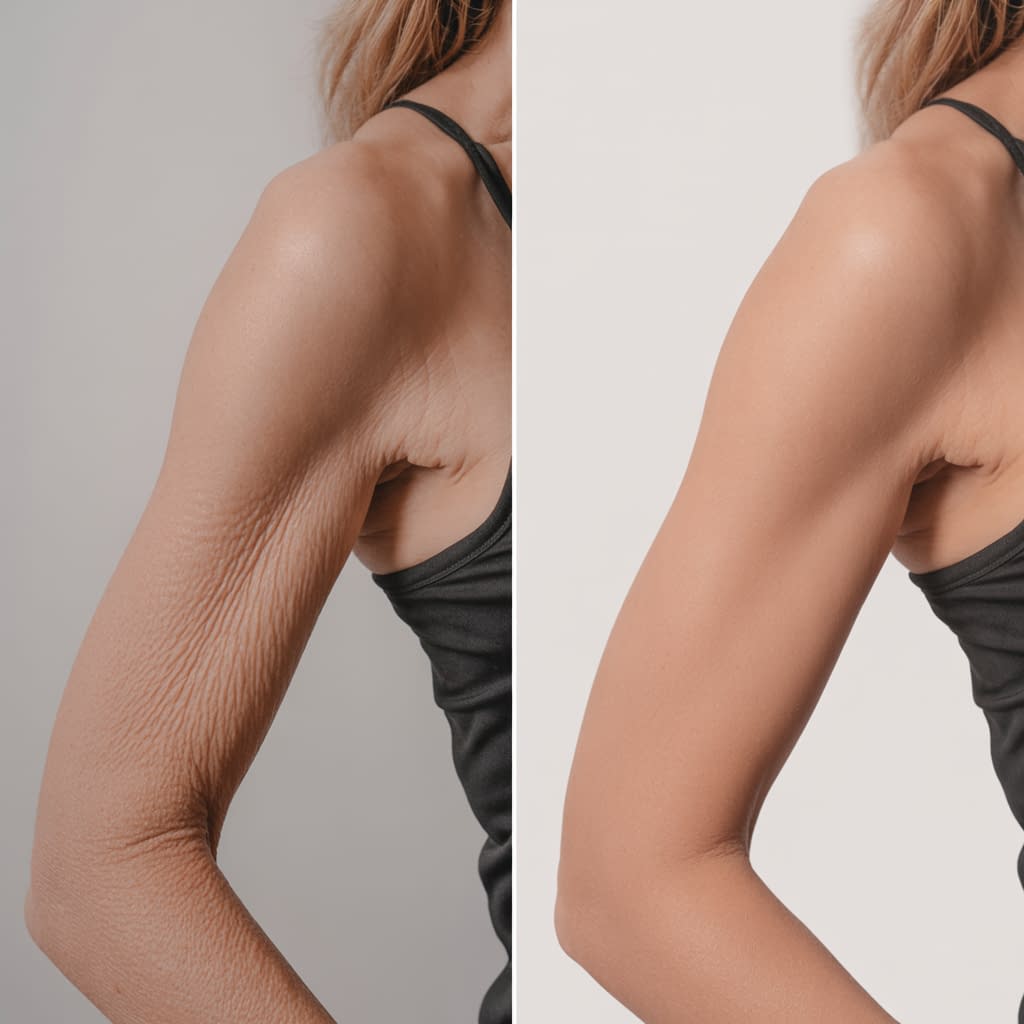
Why skin changes over time
- Collagen decrease: Collagen is the protein that gives skin structure. Starting in your late 20s, collagen production declines by approximately 1% per year, leading to sagging and thinning.
- Elastin breakdown: Elastin fibers allow skin to bounce back. Loss of elastin contributes to less resilient, looser skin.
- Moisture retention declines: The skin’s natural barrier becomes less effective, reducing the ability to lock in hydration and making skin prone to dryness.
- External factors: Sun exposure, pollution, smoking, and repeated friction accelerate aging signs.
Step-by-step understanding
- Observe: Check areas like hands, knees, and arms for thinning or dullness.
- Assess: Notice dryness, fine lines, or loss of elasticity to tailor your routine.
- Plan: Combine hydration, ingredient-rich skincare, protection, and lifestyle adjustments to slow and reverse visible signs.
Hydration for the Body: Choosing Moisturizers That Restore and Lock in Moisture
Hydration is the foundation of firm, glowing skin. Aging skin needs products that both replenish water and lock it in.
Step-by-step hydration guide
- Select the right texture:
- Dry skin: Rich creams or butters with shea, cocoa, or mango butter.
- Combination/normal: Lightweight lotions with humectants like glycerin or hyaluronic acid.
- Sensitive skin: Fragrance-free, minimal-ingredient creams or oils.
- Apply correctly:
- After showering, pat your skin dry and immediately apply moisturizer to damp skin to seal hydration.
- Focus on prone areas: elbows, knees, forearms, and shins.
- Consider layering:
- Oils (like jojoba or almond) can be layered on top of creams to prevent water loss in extremely dry climates.
- Routine: Twice daily application is ideal, or at minimum, post-shower and before bed.
Powerhouse Ingredients to Look For: Retinoids, Peptides, Vitamin C, and Hyaluronic Acid
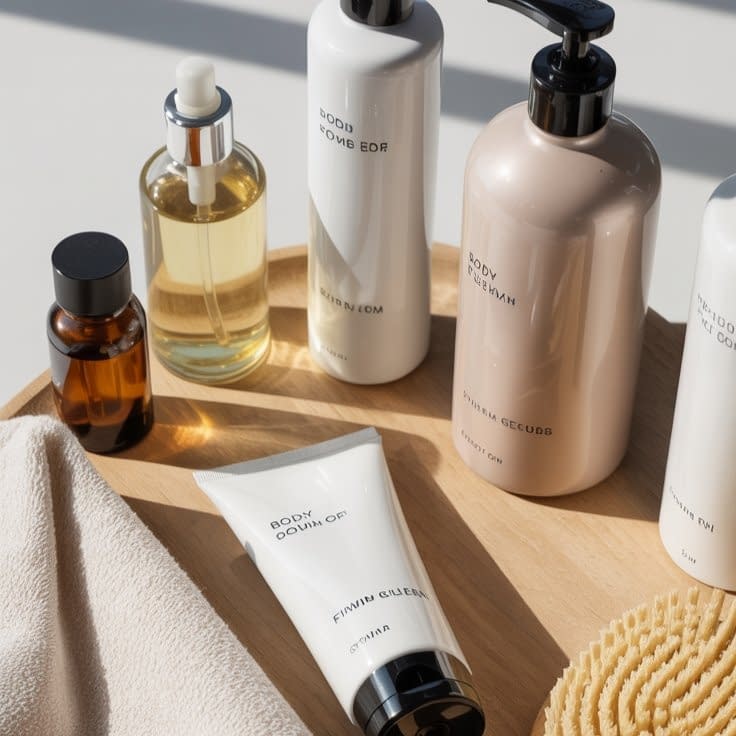
Certain ingredients help rebuild skin structure, increase firmness, and brighten skin.
Step-by-step guide to ingredient use
- Retinoids (retinol or prescription-strength tretinoin)
- Stimulate collagen production, reduce wrinkles, and improve elasticity.
- Apply at night to dry skin; start 2–3 nights per week and increase gradually.
- Peptides
- Support the building blocks of collagen and elastin.
- Can be applied morning or night in serums or creams; layer under moisturizer.
- Vitamin C
- Protects against oxidative damage and brightens dull skin.
- Use in morning routine under SPF.
- Hyaluronic Acid
- Attracts and retains moisture for plumper skin.
- Apply to damp skin before your moisturizer.
Pro tip: Introduce one active at a time and monitor for irritation. Combining all at once can overwhelm aging skin.
Everyday Sun Protection for Your Body: SPF, UPF Clothing, and Practical Tips
UV exposure is the main preventable cause of premature aging, including sagging, wrinkles, and age spots.
Step-by-step sun protection plan
- Daily SPF application: Use SPF 30 or higher on exposed areas (arms, legs, décolletage).
- Reapplication: Reapply every 2 hours when outdoors, especially when swimming or sweating.
- UPF clothing: Invest in protective fabrics for long sun exposure.
- Accessories: Hats, long sleeves, and sunglasses help reduce cumulative damage.
- Practical habit: Keep sunscreen near your lotion in your bathroom to make it part of your daily routine.
Gentle Exfoliation to Renew Skin Texture Without Stripping
Exfoliation removes dead skin cells, improving radiance and allowing better product absorption.
Step-by-step exfoliation guide
- Choose the type:
- Physical: gentle scrubs with smooth particles; limit to 1x/week.
- Chemical: AHAs (glycolic/lactic acids) or BHAs (salicylic acid); 1–2x/week.
- Apply carefully:
- Avoid aggressive scrubbing; use gentle, circular motions.
- Limit sensitive areas such as knees, inner arms, or décolletage.
- Follow with hydration:
- Apply moisturizer or body oil immediately after exfoliating to lock in moisture.
Firming Techniques: Massage, Dry Brushing, and Lymphatic Stimulation
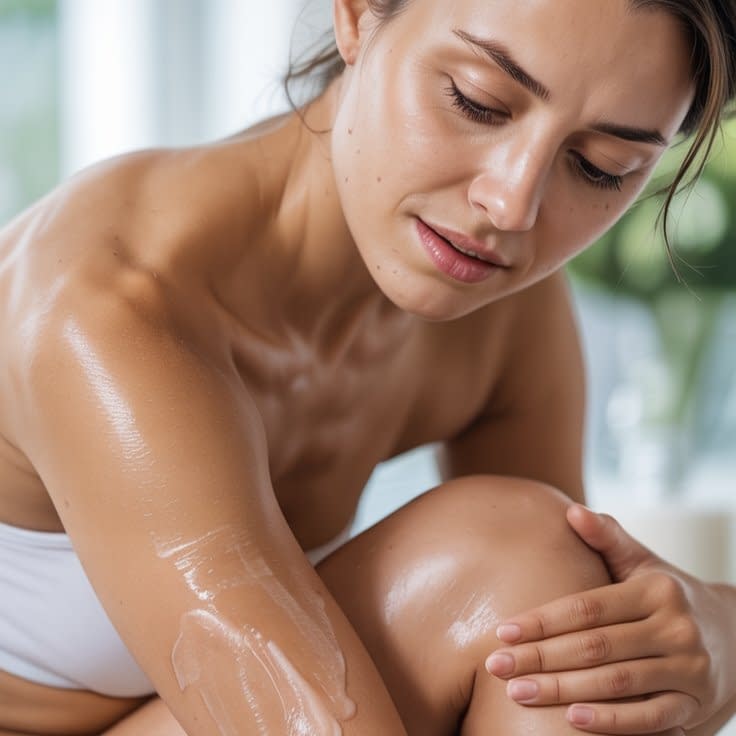
Stimulating circulation and promoting lymphatic drainage can temporarily improve tone and texture.
Step-by-step firming routine
- Dry brushing: Use a soft-bristled brush in upward strokes from feet to heart before showering, 2–3x/week.
- Massage: Apply firming cream or oil with circular movements to problem areas.
- Lymphatic stimulation: Gentle compression and massage along lymph nodes (neck, armpits, inner thighs) improves circulation.
Tip: Consistency is key; even 5–10 minutes a day makes a difference over time.
Nutrition and Supplements for Elasticity: Collagen, Omega-3s, and Antioxidants
What you eat impacts your skin as much as topical care.
Step-by-step nutrition plan
- Collagen peptides: May support firmness and elasticity. Mix in drinks or smoothies.
- Omega-3 fatty acids: Found in salmon, flaxseed, or supplements; help maintain skin barrier and reduce inflammation.
- Antioxidant-rich foods: Berries, leafy greens, and nuts protect against oxidative damage.
- Hydration: Adequate water intake keeps skin plump and functional.
Movement That Matters: Strength Training and Activities That Support Firm Skin
Exercise builds underlying muscle tone, which supports skin and improves appearance.
Step-by-step movement guide
- Strength training: Focus on resistance exercises for arms, legs, and core at least 2–3x/week.
- Cardio: Improves circulation and nutrient delivery to skin cells.
- Flexibility and posture exercises: Yoga or Pilates helps maintain firm, lifted appearance, especially in décolletage and torso.
Smart Bathing: Temperature, Cleansers, and Routine Habits That Protect Aging Skin
Hot showers and harsh soaps accelerate dryness and irritation.
Step-by-step bathing tips
- Water temperature: Use lukewarm water. Hot water depletes natural oils.
- Cleanser choice: Fragrance-free, gentle body washes or syndets. Avoid harsh soaps.
- Limit time: 5–10 minutes per shower is ideal.
- Post-shower care: Pat dry and immediately apply moisturizer.
Special Care for Neck, Décolletage, Hands, and Knees

These areas often show age first due to thinner skin and repeated sun exposure.
Step-by-step targeted care
- Moisturize daily: Use richer creams or serums on these areas.
- Sun protection: SPF for hands, neck, and chest daily.
- Exfoliate gently: Chemical exfoliants can smooth these high-visibility zones without damage.
- Targeted massage or firming: Gentle upward massage improves circulation and elasticity.
At-Home Treatments vs. Professional Procedures: Peels, Microneedling, and Energy Therapies
Some firmness concerns may benefit from clinical intervention.
Step-by-step guidance
- At-home treatments: Retinoids, firming creams, and chemical peels at low concentrations for ongoing maintenance.
- Professional procedures:
- Microneedling: Stimulates collagen and improves texture.
- Laser or RF treatments: Target sagging, pigmentation, and uneven tone.
- Combine wisely: Use home care for daily maintenance and professional treatments for significant, long-term improvements.
Final Words
Morning Routine
- Gentle cleanse in lukewarm water.
- Hydrating serum or lightweight lotion.
- SPF 30+ on all exposed areas.
- Lightweight makeup or body makeup (optional).
Evening Routine
- Gentle cleansing to remove dirt and SPF.
- Targeted treatments (retinoids, peptides).
- Rich moisturizer or oil.
- Massage or dry brushing (if desired).
Weekly Routine
- Exfoliate 1–2x/week.
- Deep hydration masks or body treatments.
- Professional treatments as needed.
Consistency, combined with smart product choices, nutrition, and movement, will help your skin remain firm, hydrated, and radiant over time. Aging gracefully doesn’t mean giving up glowing skin—it means understanding your skin’s changing needs and responding with knowledge, care, and patience.


